When I have overlapping divs in IE 11, the 1st div with a radio button in it is blocked from receiving any mouse events by the 2nd overlapping div, so I cannot click on the radio buttons! See simplified example of the code I'm using:
<div>
<div style="display: block; border: solid 1px blue;">
<table>
<tr>
<td><input id="rbl_0" type="radio" checked="checked"><label for="rbl_0">Option 1</label></td>
<td><input id="rbl_1" type="radio"><label for="rbl_1">Option 2</label></td>
</tr>
</table>
</div>
<div style="margin-top: -23px; display: inline-block; border: solid 1px red;">
<table style="width: 100%; table-layout: fixed;">
<tr><td> </td></tr>
<tr><td>Product 1</td></tr>
<tr><td>Product 2</td></tr>
</table>
</div></div>
And in JSFiddle: http://jsfiddle.net/yW6kp/1/.
I need these to overlap, but also need the events on the radiobutton to happen as well. I can achieve this by using display: block on the second div instead of display: inline-block, but then they do not overlap. This does not happen in IE 10 or in IE 11 compatibility mode. Can anyone explain what's up

